Abstract
A study was carried out in Santo Antonio de Jesus, a town in Bahia State, north-east Brazil, to determine the relationship between various biological, socioeconomic, behavioural, and geographical factors and the prevalence and intensity of Schistosoma mansoni infection. The town's population was around 45,000 and the study was targeted at all children born in 1970-71 who were living in the town at the time of the survey (August-November 1984). An extensive questionnaire was used to collect information on each child and on family and household conditions; samples of stools were also taken for examination (Kato-Katz method). A survey of water snails was also carried out and information on the distribution of their breeding sites was plotted on a map of the area. The overall prevalence of S. mansoni infection was 31.0%. Several variables that reflected different aspects of the population's way of life were strongly associated with the prevalence and the intensity of infection. Some of the findings are valuable for understanding the mechanisms involved in the occurrence of schistosomiasis and its distribution in urban locations as well as for defining high-risk groups, all of which are important for planning control strategies.
Full text
PDF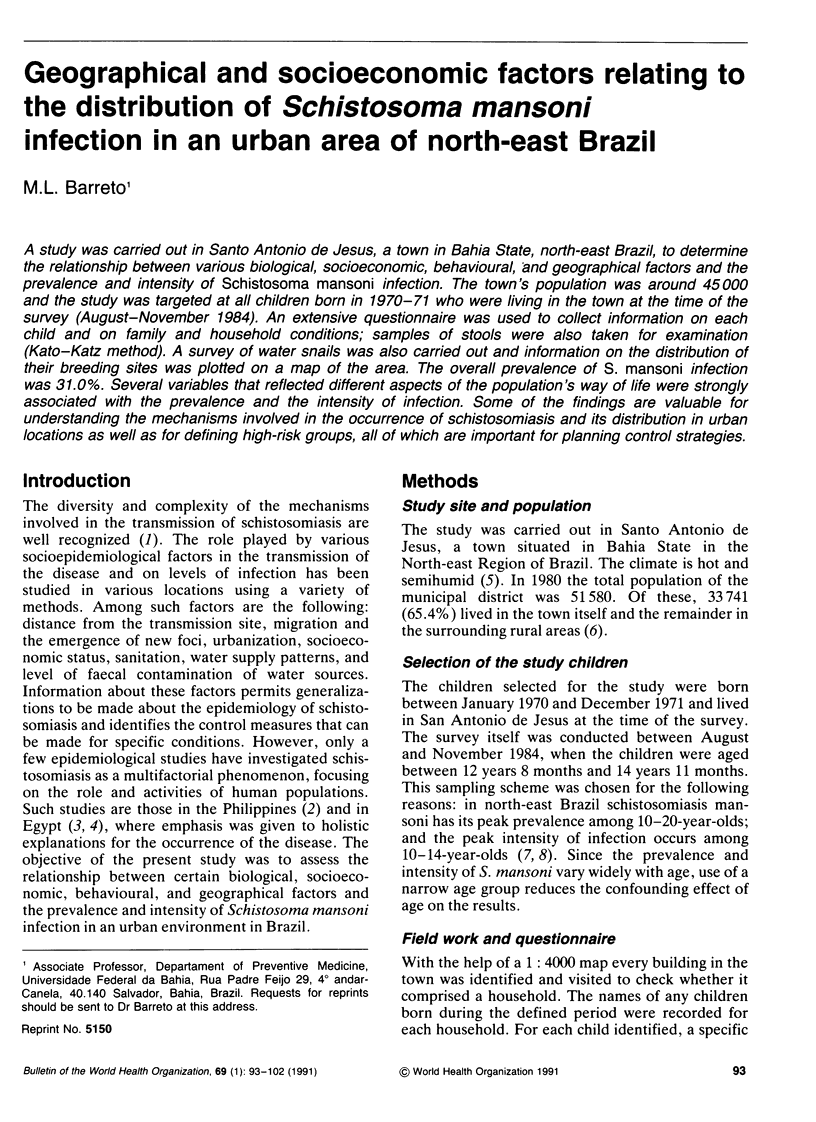

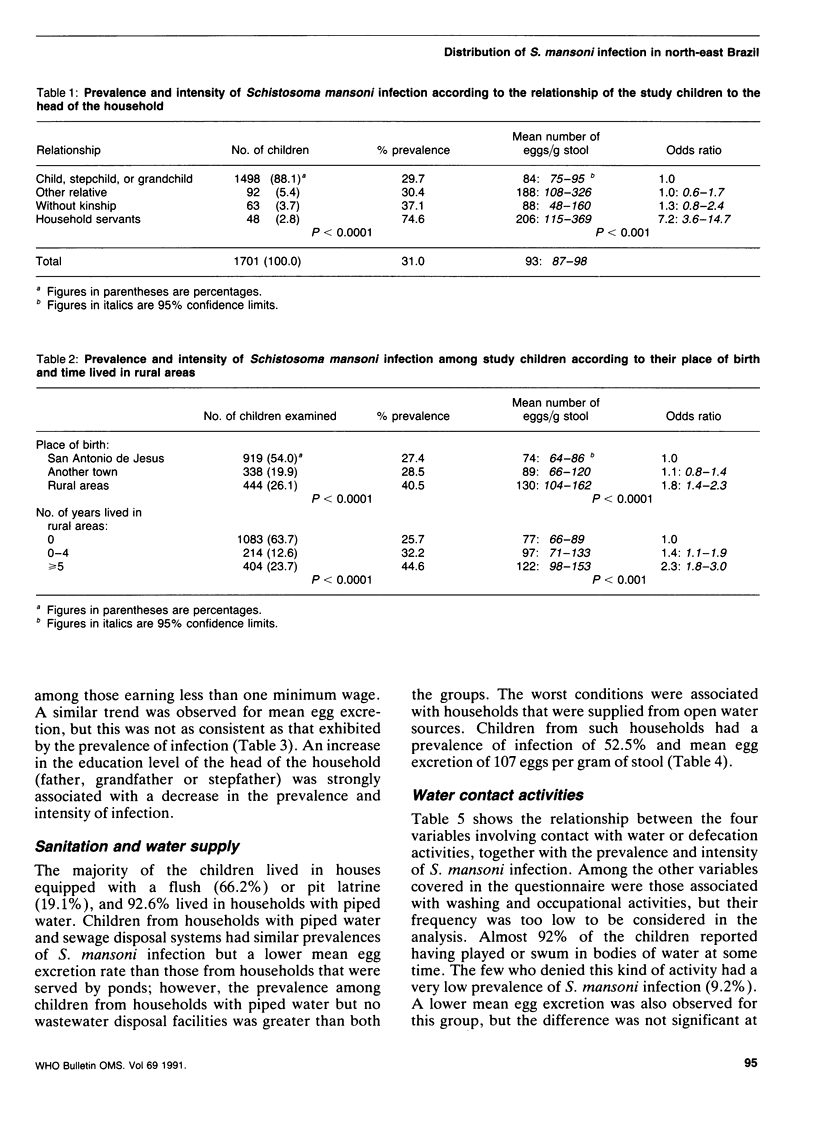
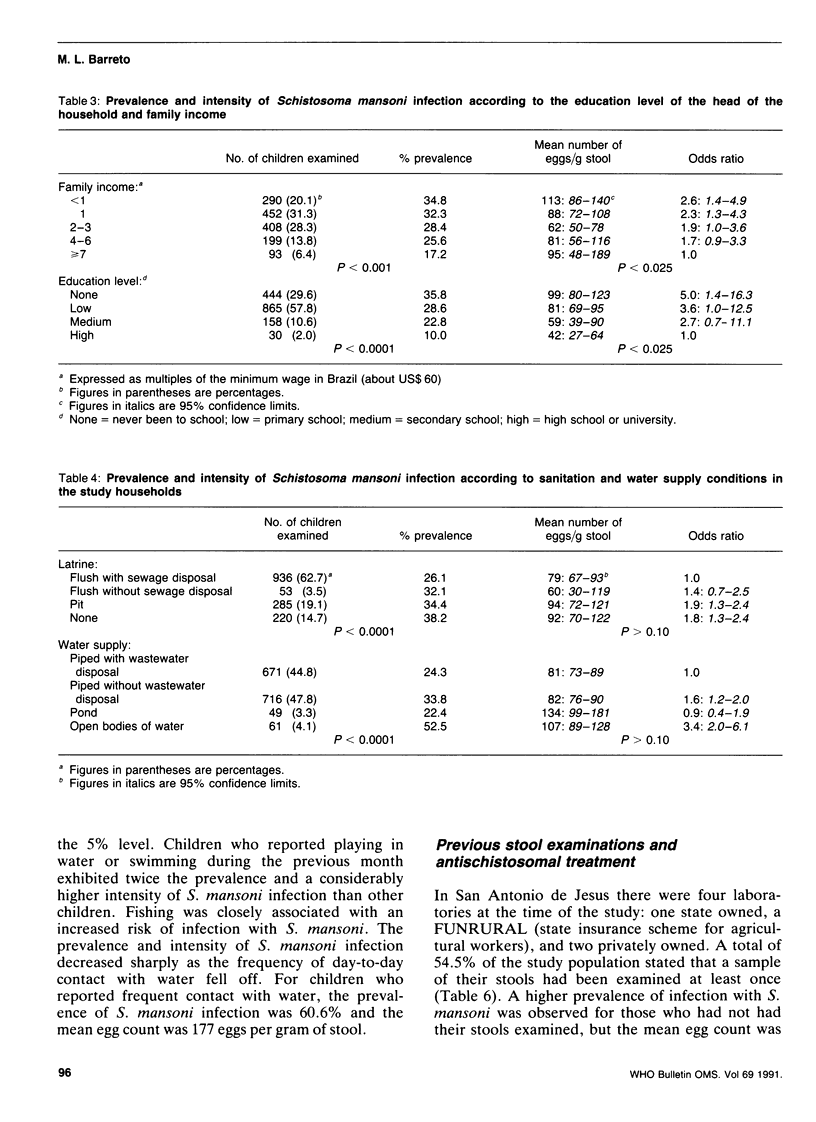
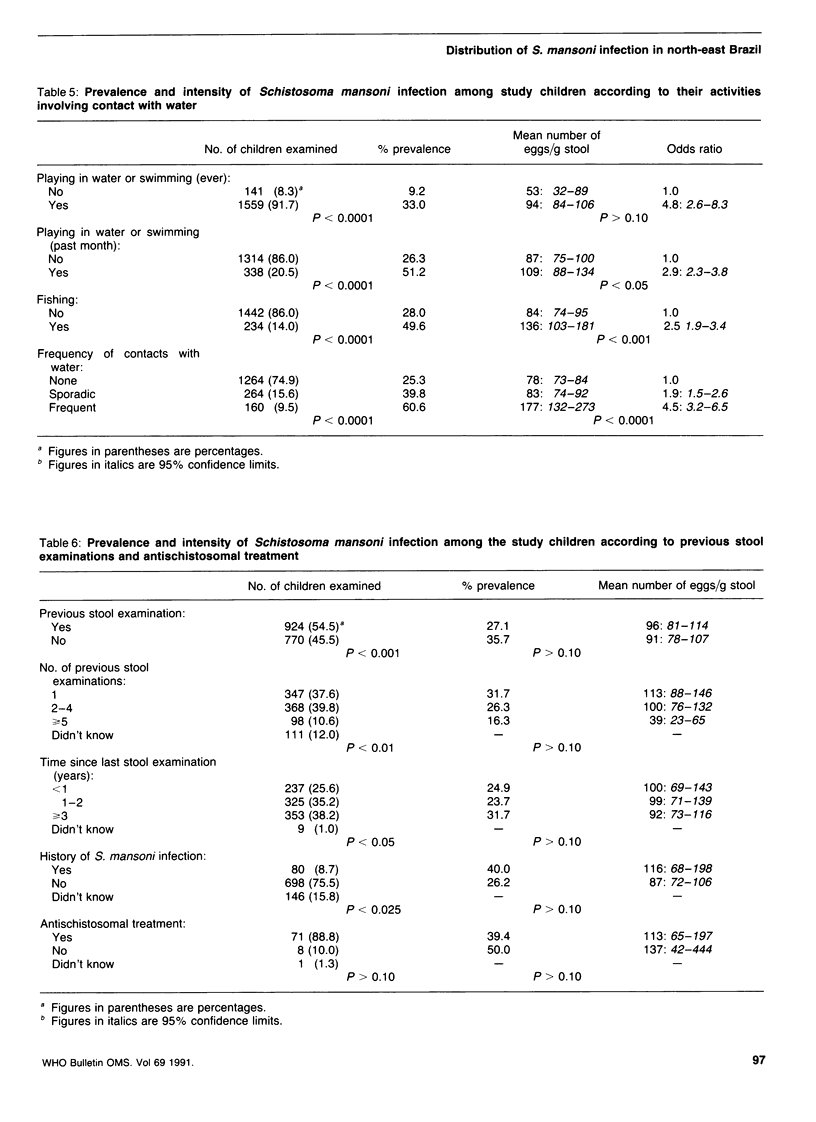
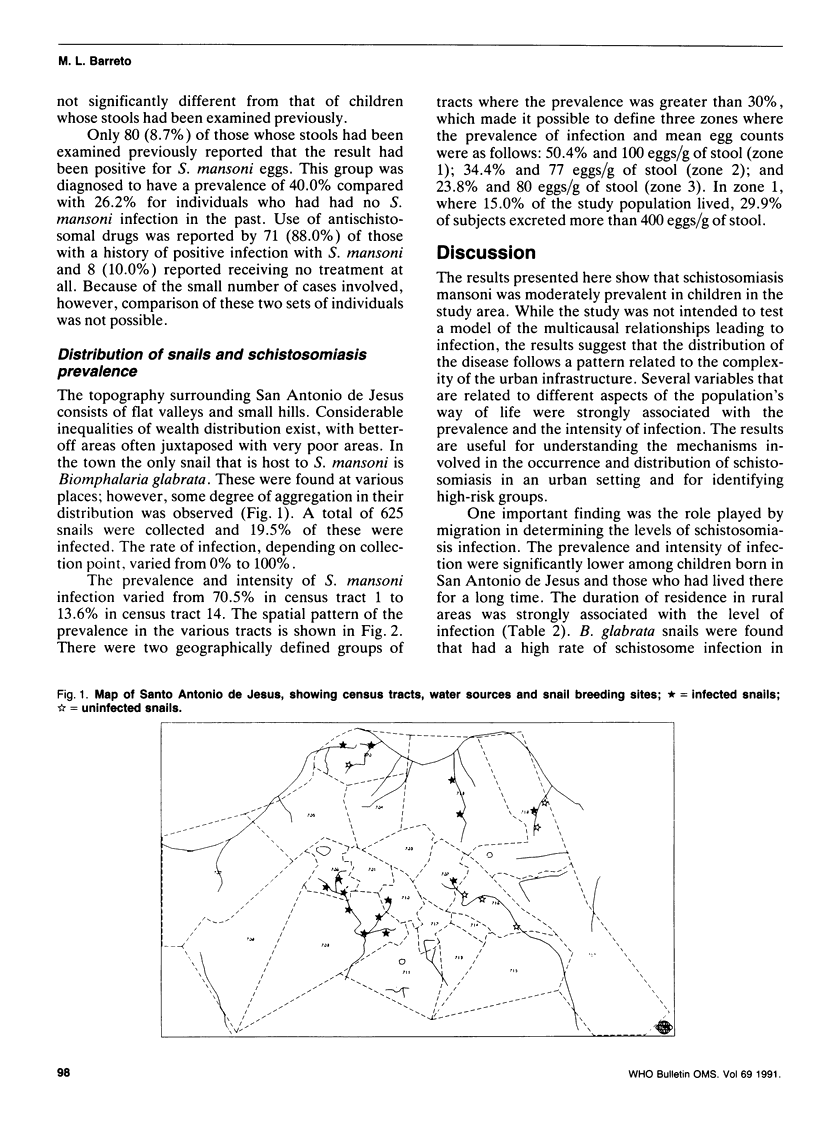

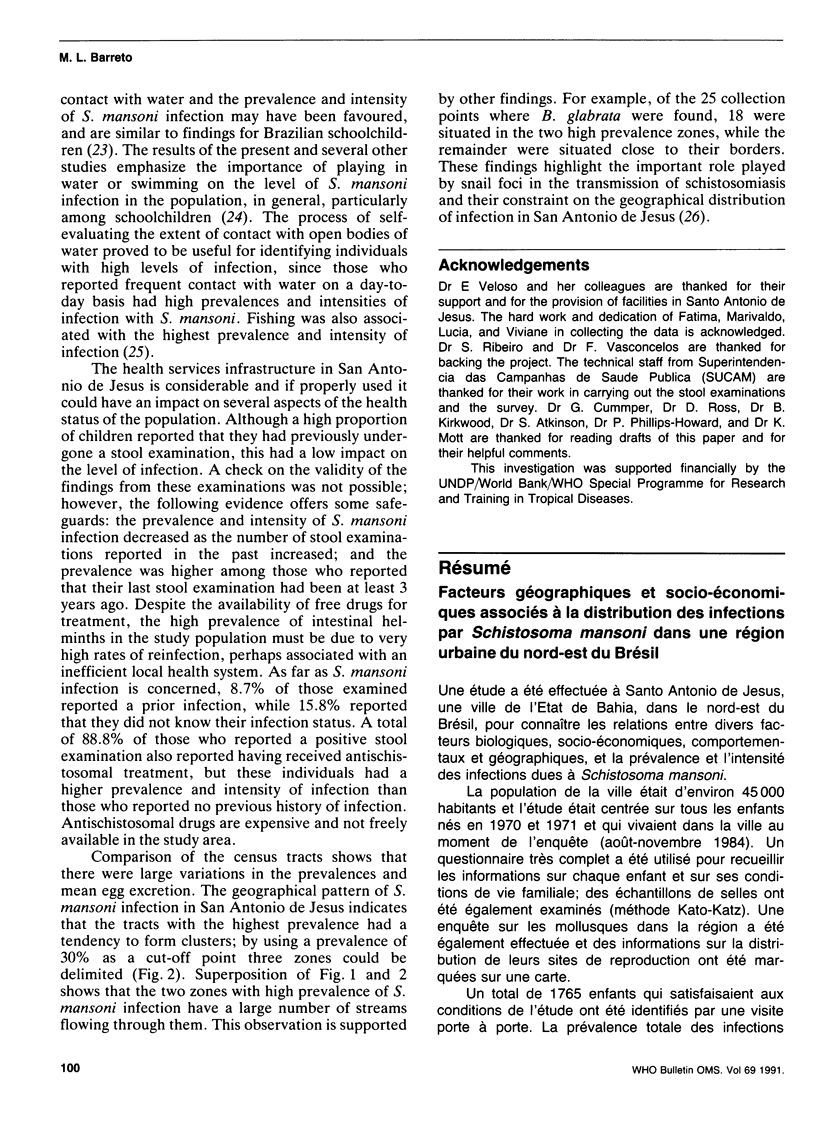
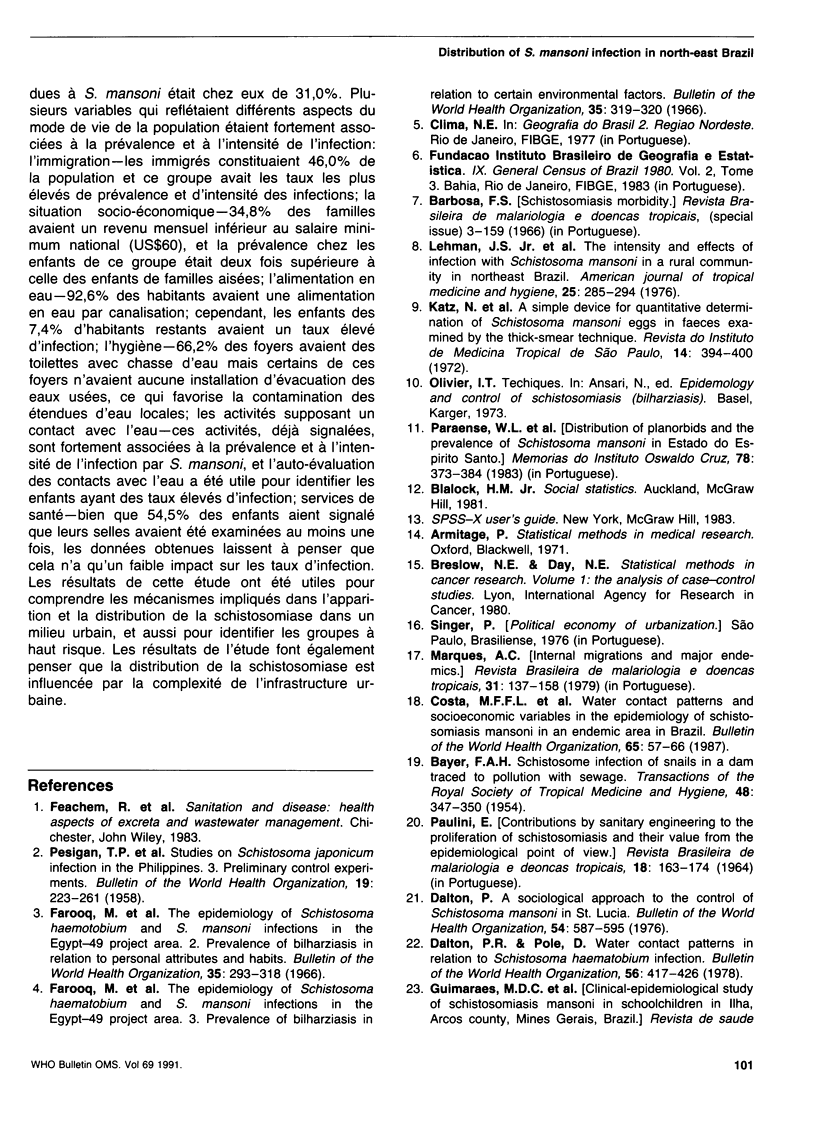
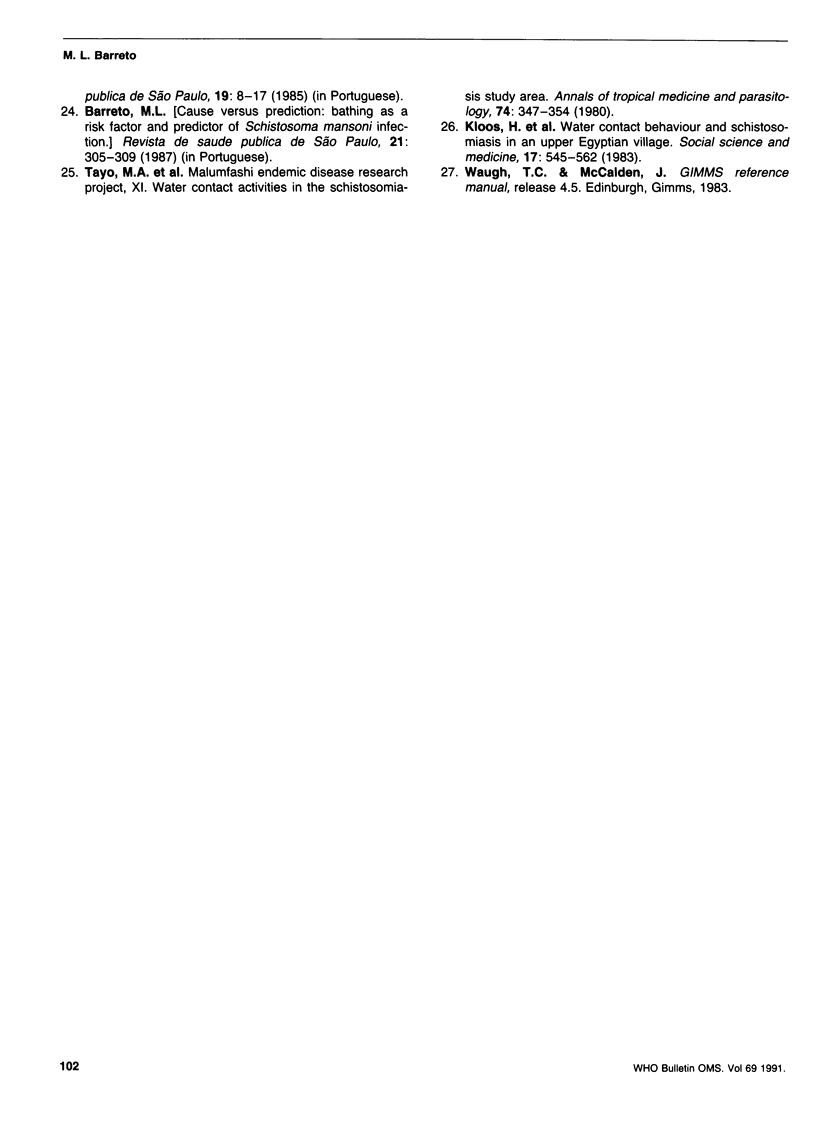
Selected References
These references are in PubMed. This may not be the complete list of references from this article.
- BAYER F. A. Schistosome infection of snails in a dam traced to pollution with sewage. Trans R Soc Trop Med Hyg. 1954 Jul;48(4):347–350. doi: 10.1016/0035-9203(54)90108-x. [DOI] [PubMed] [Google Scholar]
- Barreto M. L. Causa versus prediço: história de banhos em rios como fator de risco e preditor da infecço pelo Schistosoma mansoni. Rev Saude Publica. 1987 Aug;21(4):305–309. doi: 10.1590/s0034-89101987000400003. [DOI] [PubMed] [Google Scholar]
- Dalton P. R. A socioecological approach to the control of Schistosoma mansoni in St Lucia. Bull World Health Organ. 1976;54(5):587–595. [PMC free article] [PubMed] [Google Scholar]
- Dalton P. R., Pole D. Water-contact patterns in relation to Schistosoma haematobium infection. Bull World Health Organ. 1978;56(3):417–426. [PMC free article] [PubMed] [Google Scholar]
- Farooq M., Nielsen J., Samaan S. A., Mallah M. B., Allam A. A. The epidemiology of Schistosoma haematobium and S. mansoni infections in the Egypt-49 project area. 2. Prevalence of bilharziasis in relation to personal attributes and habits. Bull World Health Organ. 1966;35(3):293–318. [PMC free article] [PubMed] [Google Scholar]
- Farooq M., Nielsen J., Samaan S. A., Mallah M. B., Allam A. A. The epidemiology of Schistosoma haematobium and S. mansoni infections in the Egypt-49 project area. 3. Prevalence of bilharziasis in relation to certain environmental factors. Bull World Health Organ. 1966;35(3):319–330. [PMC free article] [PubMed] [Google Scholar]
- Kloos H., Higashi G. I., Cattani J. A., Schlinski V. D., Mansour N. S., Murrell K. D. Water contact behavior and schistosomiasis in an upper Egyptian village. Soc Sci Med. 1983;17(9):545–562. doi: 10.1016/0277-9536(83)90297-6. [DOI] [PubMed] [Google Scholar]
- Lehman J. S., Jr, Mott K. E., Morrow R. H., Jr, Muniz T. M., Boyer M. H. The intensity and effects of infection with Schistosoma mansoni in a rural community in northeast Brazil. Am J Trop Med Hyg. 1976 Mar;25(2):285–294. doi: 10.4269/ajtmh.1976.25.285. [DOI] [PubMed] [Google Scholar]
- Lima e Costa M. F., Magalhães M. H., Rocha R. S., Antunes C. M., Katz N. Water-contact patterns and socioeconomic variables in the epidemiology of schistosomiasis mansoni in an endemic area in Brazil. Bull World Health Organ. 1987;65(1):57–66. [PMC free article] [PubMed] [Google Scholar]
- PESIGAN T. P., FAROOQ M., HAIRSTON N. G., JAUREGUI J. J., GARCIA E. G., SANTOS A. T., SANTOS B. C., BESA A. A. Studies on Schistosoma japonicum infection in the Philippines. III. Preliminary control experiments. Bull World Health Organ. 1958;19(2):223–261. [PMC free article] [PubMed] [Google Scholar]
- Paraense W. L., de Alencar J. T., Corrêa L. R. Distribuiço dos planorbídeos e prevalência da xistosomose mansoni no Estado do Espírito Santo. Mem Inst Oswaldo Cruz. 1983 Jul-Sep;78(3):373–384. doi: 10.1590/s0074-02761983000300013. [DOI] [PubMed] [Google Scholar]
- Paulini E. Contribuiço da engenharia sanitária na profilaxia da esquistossomose e seu valor do ponto de vista epidemiológico. Rev Bras Malariol Doencas Trop. 1966 Jan-Mar;18(1):163–174. [PubMed] [Google Scholar]
- Tayo M. A., Pugh R. N., Bradley A. K. Malumfashi Endemic Diseases Research Project, XI. Water-contact activities in the schistosomiasis study area. Ann Trop Med Parasitol. 1980 Jun;74(3):347–354. doi: 10.1080/00034983.1980.11687351. [DOI] [PubMed] [Google Scholar]


